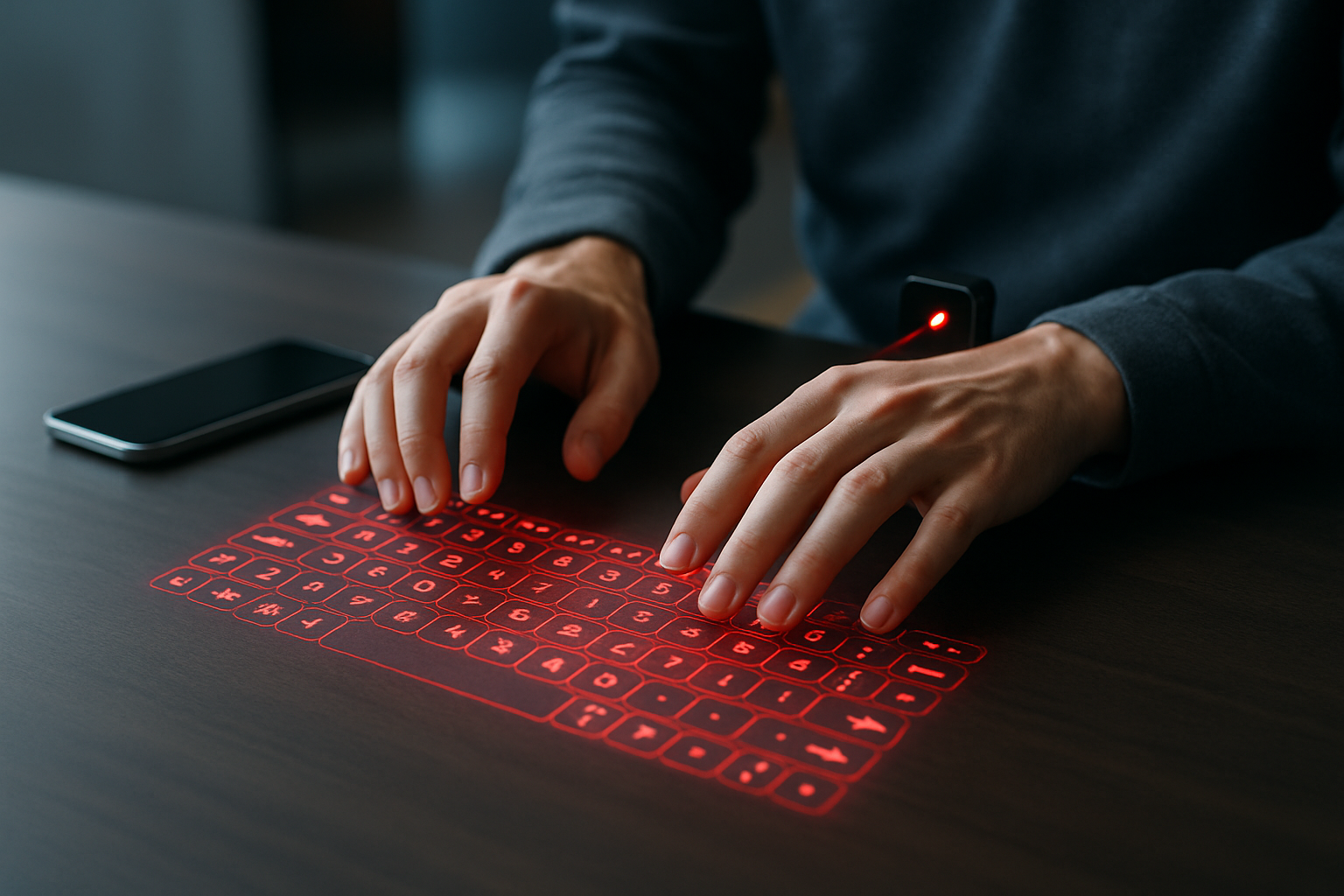Holographic Keyboards: Typing in Thin Air
In an era where technology continues to push the boundaries of what's possible, holographic keyboards are emerging as a fascinating innovation that could revolutionize how we interact with our devices. Imagine typing on a keyboard that doesn't physically exist, yet responds to your touch with startling accuracy. This isn't science fiction—it's a reality that's slowly making its way into our digital lives.

A Brief History of Virtual Input
The concept of virtual input devices isn’t entirely new. Early attempts at creating projection-based keyboards date back to the early 2000s. However, these initial prototypes were plagued with issues such as poor accuracy and lag. Over the years, advancements in laser technology, motion sensing, and artificial intelligence have significantly improved the performance and reliability of holographic keyboards.
How Holographic Keyboards Work
At the heart of holographic keyboard technology lies a sophisticated interplay of optics and sensors. A tiny projector emits a laser-generated image of a keyboard onto a flat surface. Simultaneously, an infrared light is projected in a plane just above the virtual keys. When a user’s fingers break this infrared plane, cameras capture the movement and sophisticated algorithms interpret the intended keystrokes.
The Benefits of Going Holographic
One of the most apparent advantages of holographic keyboards is their portability. With no physical components to carry around, these devices can be integrated into smartphones or small projectors, making them ideal for on-the-go professionals or frequent travelers. Additionally, the lack of moving parts means there’s less potential for mechanical failure, potentially increasing the lifespan of the input device.
Challenges and Limitations
Despite their futuristic appeal, holographic keyboards face several challenges. The lack of tactile feedback can be disorienting for touch typists who rely on the feel of keys. Moreover, the technology is heavily dependent on lighting conditions and surface quality, which can affect performance in various environments. There’s also the question of power consumption, as projecting a constant hologram requires significant energy.
Current Market and Future Prospects
While holographic keyboards are not yet mainstream, several companies are actively developing and refining this technology. Celluon, for instance, has released the Epic, a portable projection keyboard that connects to devices via Bluetooth. The estimated price range for such devices currently hovers between $100 to $200, making them accessible to tech enthusiasts but still somewhat of a novelty.
As the technology matures, we can expect to see holographic keyboards integrated into a wider range of devices. Smartphones with built-in projectors could eliminate the need for separate keyboard accessories. Conference rooms might feature table-wide holographic interfaces, allowing for more dynamic and flexible workspaces.
The Impact on User Experience
The introduction of holographic keyboards could significantly alter how we interact with our digital devices. For users with limited mobility or those working in space-constrained environments, this technology offers a level of flexibility that traditional keyboards can’t match. It also opens up new possibilities for user interface design, potentially leading to more intuitive and ergonomic input methods.
A Glimpse into the Future
Holographic keyboards represent a fascinating convergence of optics, sensor technology, and user interface design. While they may not entirely replace traditional keyboards in the near future, they offer a glimpse into a world where our interactions with technology become increasingly seamless and adaptable. As the technology continues to evolve, we may find ourselves typing on thin air more often than we ever imagined.





